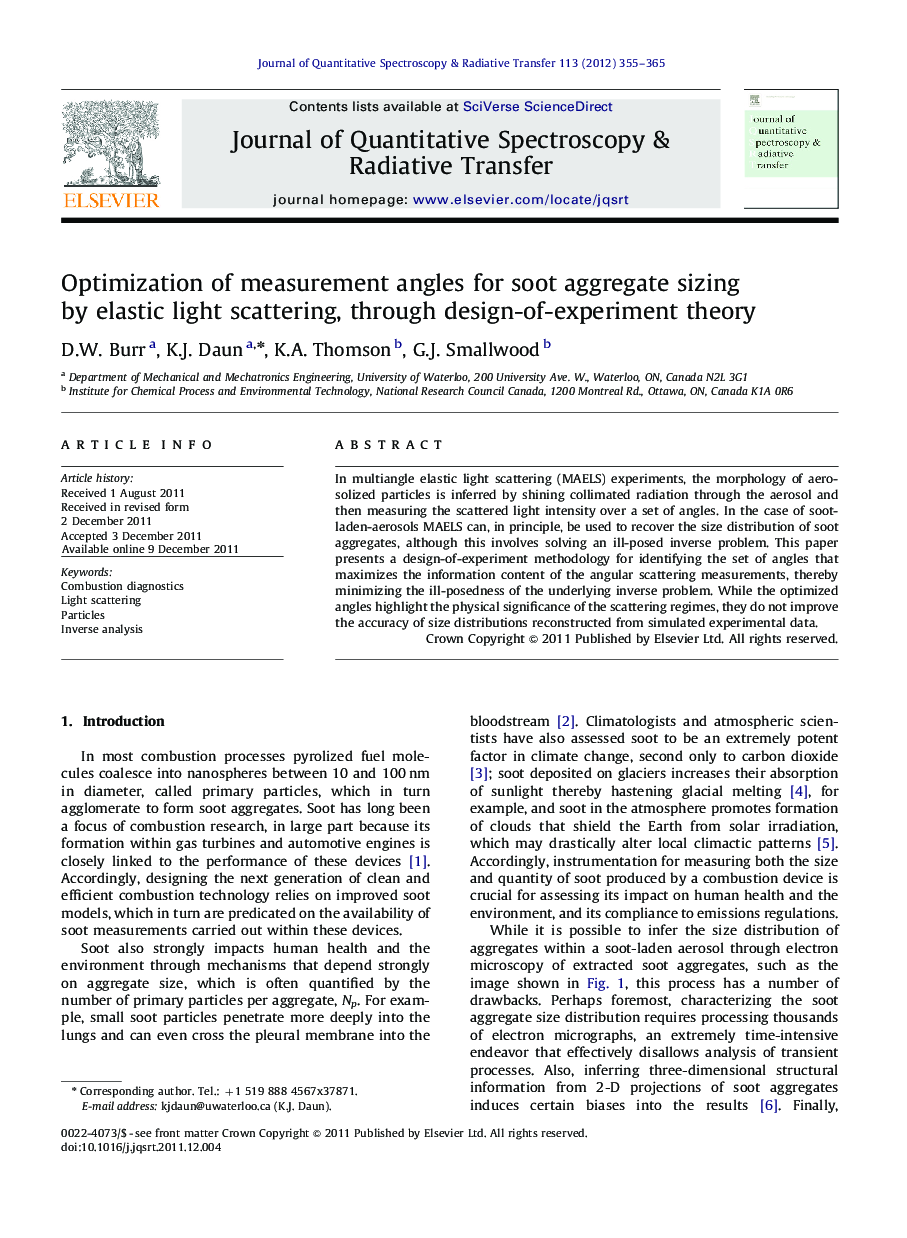| Article ID | Journal | Published Year | Pages | File Type |
|---|---|---|---|---|
| 5429449 | Journal of Quantitative Spectroscopy and Radiative Transfer | 2012 | 11 Pages |
In multiangle elastic light scattering (MAELS) experiments, the morphology of aerosolized particles is inferred by shining collimated radiation through the aerosol and then measuring the scattered light intensity over a set of angles. In the case of soot-laden-aerosols MAELS can, in principle, be used to recover the size distribution of soot aggregates, although this involves solving an ill-posed inverse problem. This paper presents a design-of-experiment methodology for identifying the set of angles that maximizes the information content of the angular scattering measurements, thereby minimizing the ill-posedness of the underlying inverse problem. While the optimized angles highlight the physical significance of the scattering regimes, they do not improve the accuracy of size distributions reconstructed from simulated experimental data.
⺠Inferring soot aggregate sizes from the angular distribution of scattered light is ill-posed. ⺠Design-of-experiment theory is used to find angles that minimize ill-posedness. ⺠Optimized angles do not improve reconstruction accuracy.
